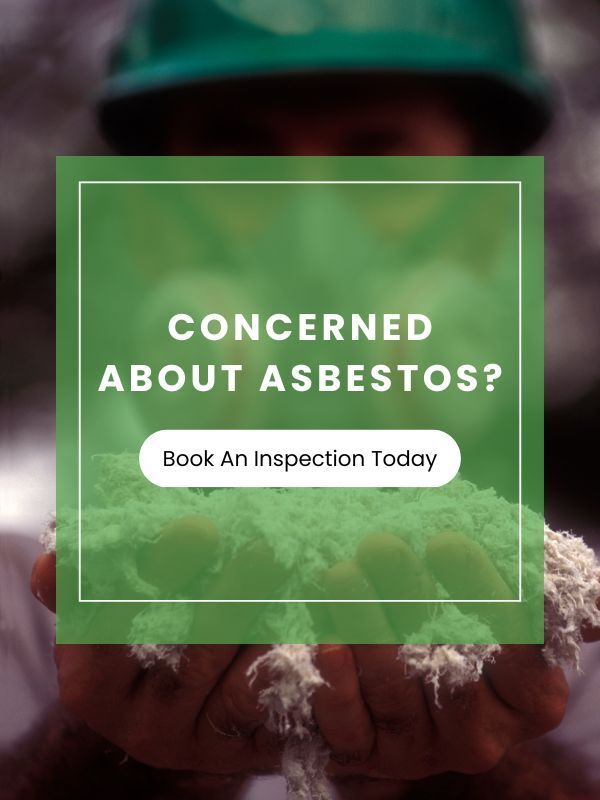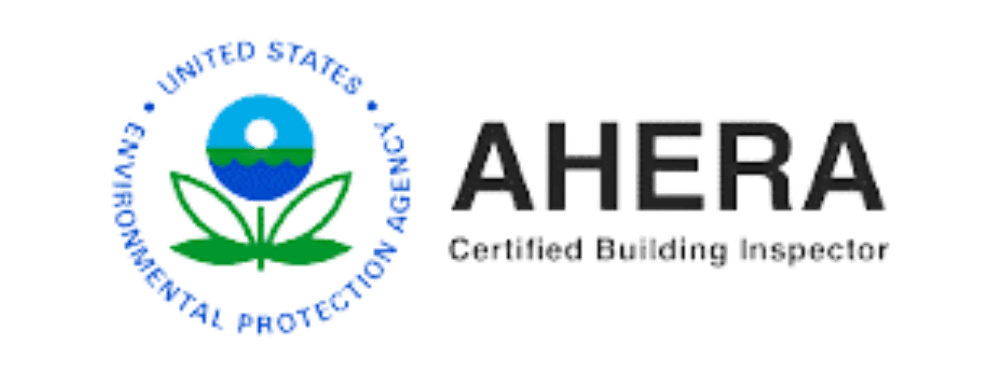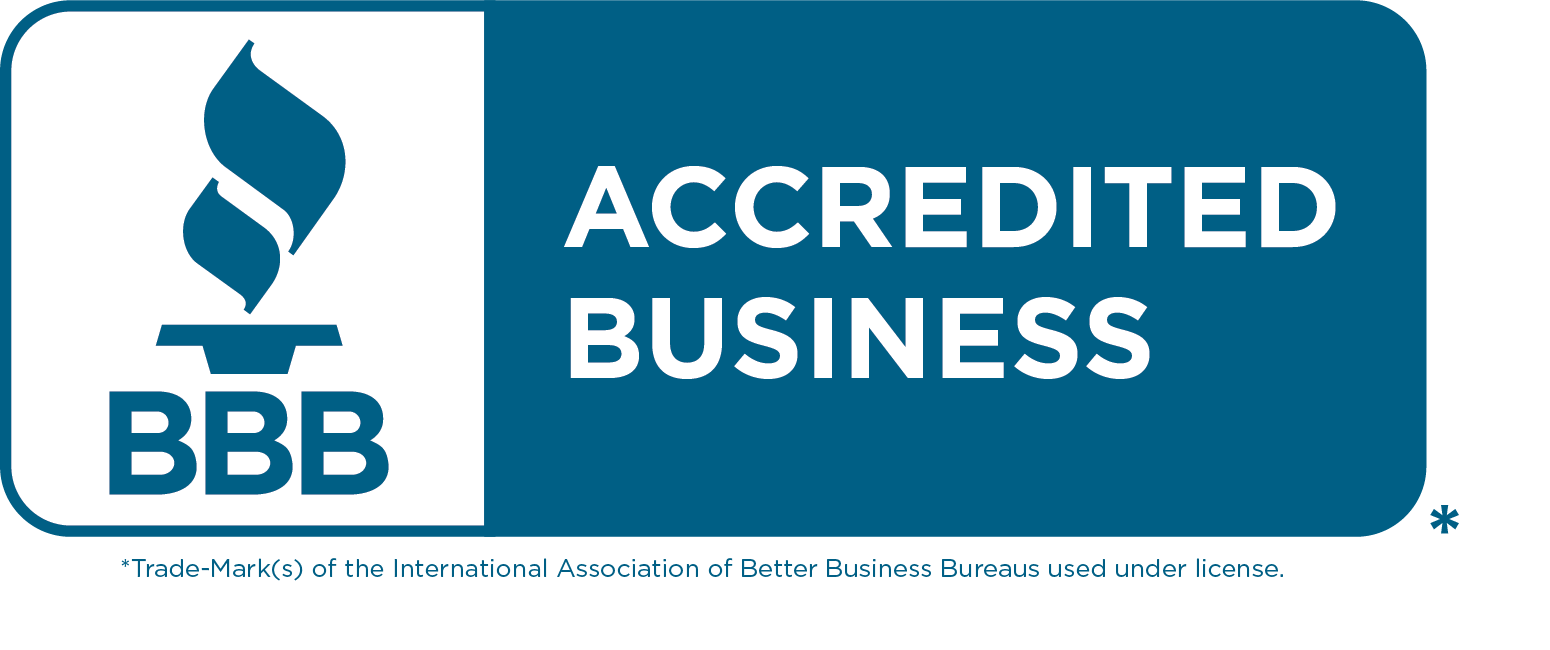What Does Asbestos Insulation Look Like?
Asbestos is a harmful, fibrous mineral (used in many building products) before the 1990s - it is still found in many homes throughout Alberta.
Asbestos-containing insulation puts people at risk of exposure daily as it can be encountered in homes, schools, and workplaces.
To avoid the severe health complications that asbestos can cause, you must be able to identify asbestos to keep both you and your family safe.
Types of Asbestos Insulation
Loose-Fill Insulation
Loose-fill asbestos insulation, sometimes known as loose-fill attic insulation, is one of the most common asbestos-containing insulation. It was often poured or blown through tubes into attic floors and other spaces in the walls of buildings.
Loose-fill insulation has a fluffy texture and lumpy appearance and is often full of the harmful mineral; it also never has a paper backing. The slightest breeze can disturb this material, sending inhalable asbestos fibers airborne.
Spray-on Insulation
Spray-on insulation is abundant in commercial buildings as it makes insulating ceilings and structural beams much easier.
If the ceiling, walls, or beams are coated in a thick layer of gray material, there is a high chance they contain asbestos. Disturbing or damaging the material can release a toxic cloud of asbestos fibers into the air.
Wrapped Insulation
Many plumbing components in older homes and buildings, including pipes and ducts, were wrapped with asbestos-containing insulation.
Prior to the 90s, there were two common types of asbestos pipe insulation - Asbestos Wool Insulation & Asbestos Air-Cell Insulation.
Anytime you encounter pipes wrapped in cardboard, they may contain asbestos, so be cautious! Asbestos Air-Cell Insulation is especially dangerous because as the product ages, it gets weaker and is prone to crumble if disturbed or damaged. When this happens, large amounts of asbestos-containing dust will become airborne.
Block Insulation
Block insulation is an easy way to insulate the walls of a building. Prior to the 90s, this type of wall insulation was nearly 100% made of asbestos, making them incredibly dangerous if they are sawed or damaged in any way.
Insulation That Commonly Contains Asbestos
Vermiculite Insulation
Pure vermiculite shares many qualities with asbestos, such as fire resistance and the ability to insulate, except it is entirely safe and harmless.
This is why the brand “Zonolite” was produced as a type of loose-fill insulation that was made with vermiculite from a mine in Libby, Montana. Production of Zonolite insulation began in the 1940s and was installed in millions of homes throughout Canada and the United States until the mid-1980s.
The problem is this mine was contaminated with tremolite asbestos. So even though pure vermiculite is safe, its contamination with tremolite made it harmful and toxic.
Nearly 95% of vermiculite insulation in Alberta comes from this mine in Libby, meaning houses built or remodeled before 1990 have a very high chance of containing asbestos.
Vermiculite insulation appearance resembles the look of small pebbles and is usually a silvery-gold or light-brown color.
It was most commonly installed as attic insulation, though it may also be present in walls and other cavities such as old furnace exhaust stacks. It was also commonly used commercially to insulate cinder block walls.
Be sure to get an asbestos test if you suspect asbestos-containing vermiculite insulation in your home!
Asbestos Pipe/Furnace Ducting Insulation
If your home was built or remodeled before 1990, the pipes might contain asbestos.
Common locations include the basement, furnace room, attic, and other utility rooms.
The best way to tell if your pipes contain asbestos is if they are wrapped with corrugated cardboard that is made out of asbestos paper.
Furnace ducting can also be wrapped in a white paper like material either at the joints only or along the entire duct.
Additionally, some pipe insulation was adhered using an asbestos-containing adhesive. As with vermiculite, the only way to be sure of the presence of asbestos is to perform a test.
Insulation That Does Not Likely Contain Asbestos
Blanket Insulation: Batt and Roll
This is the most common and widely available type of insulation on the market. Blanket insulation consists of flexible fibers that are most commonly fiberglass, though in some instances, you can find batts made from:
- Natural Fibers like Cotton or Wool
- Mineral Wool (Rock and Slag)
- Plastic Fibers
You generally do not need to be concerned about this type of insulation containing asbestos.
Cellulose Insulation
Cellulose insulation is a thick loose-fill insulation that is clumpy, soft, gray in color, and does not shine.
It is made of different types of recycled paper including cardboard, newspaper, and other waste paper products. It is an eco-friendly insulation and contains no minerals.
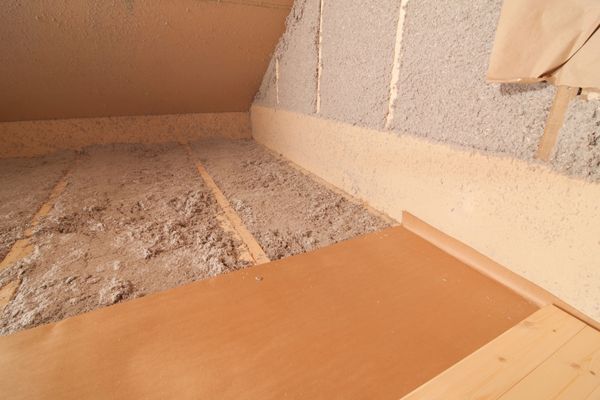
Rock Wool Insulation
A mineral-based loose-fill insulation, rock wool is a type of insulation that is fibrous, soft, and cottony in texture.
Rock wool is usually gray, white/ off-white, or cream in its color. It is manufactured by melting basalt rock and slag (a recycled byproduct of steel-making) at extreme temperatures exceeding 1500 degrees Celsius.
Once the materials melt and liquefy together, the mixture is blown into a spinning chamber that stretches the heated liquid into fibers that can be used as insulation.
Rock wool can be installed as loose-fill or as batts; this material is safe and asbestos free.
Loose-Fill Fiberglass Insulation
Insulation that is fluffy and white, with a bit of a shine to it is likely fiberglass.
The material can resemble the look of cotton candy and is made of very fine fibers. The material does not contain asbestos; however, because it is made of glass it can still irritate the skin or cause respiratory irritation.
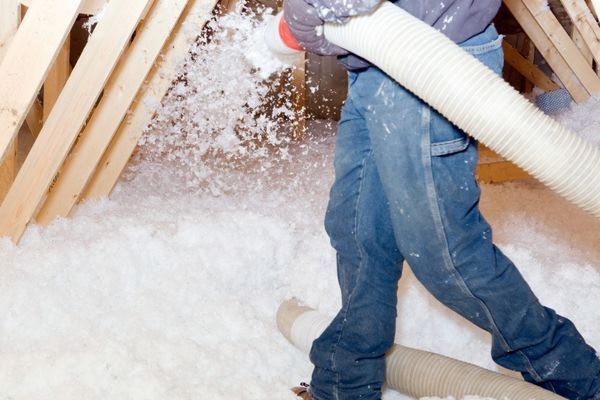
When Was Asbestos Insulation Used?
Asbestos was frequently used in insulation and other construction materials well into the 1980s; this was also when asbestos-containing products began to phase out.
Many properties of asbestos contributed to its popularity, including:
- Its strength
- Fire resistance
- Heat insulation
- Sound insulation
- Its low cost
Because of this, asbestos was used in hundreds of other products in addition to insulation, including common household materials like:
- Ceiling Tiles
- Vinyl Flooring-Sheet or Tiles
- Wall and Ceiling Textures
- Window Putty’s
- Partitions
- Plasters and Drywall Compounds
- Stucco
Asbestos wasn’t entirely prohibited in Canada until 2018; in fact, as recently as 2015 Canada was importing roughly $8 million of asbestos-containing products. While the majority of products imported that contained asbestos were brake pads, this highlights the fact that asbestos can still be lurking in unexpected corners.
Whether you suspect asbestos in insulation or other products in your home, the most important thing to remember is not to disturb or damage the material. Doing so greatly increases the risk of asbestos becoming airborne and causing severe health effects.
Chessor Environmental offers asbestos testing in Edmonton and the surrounding area, give us a call to book an inspection or if you have any materials you’d like tested.

